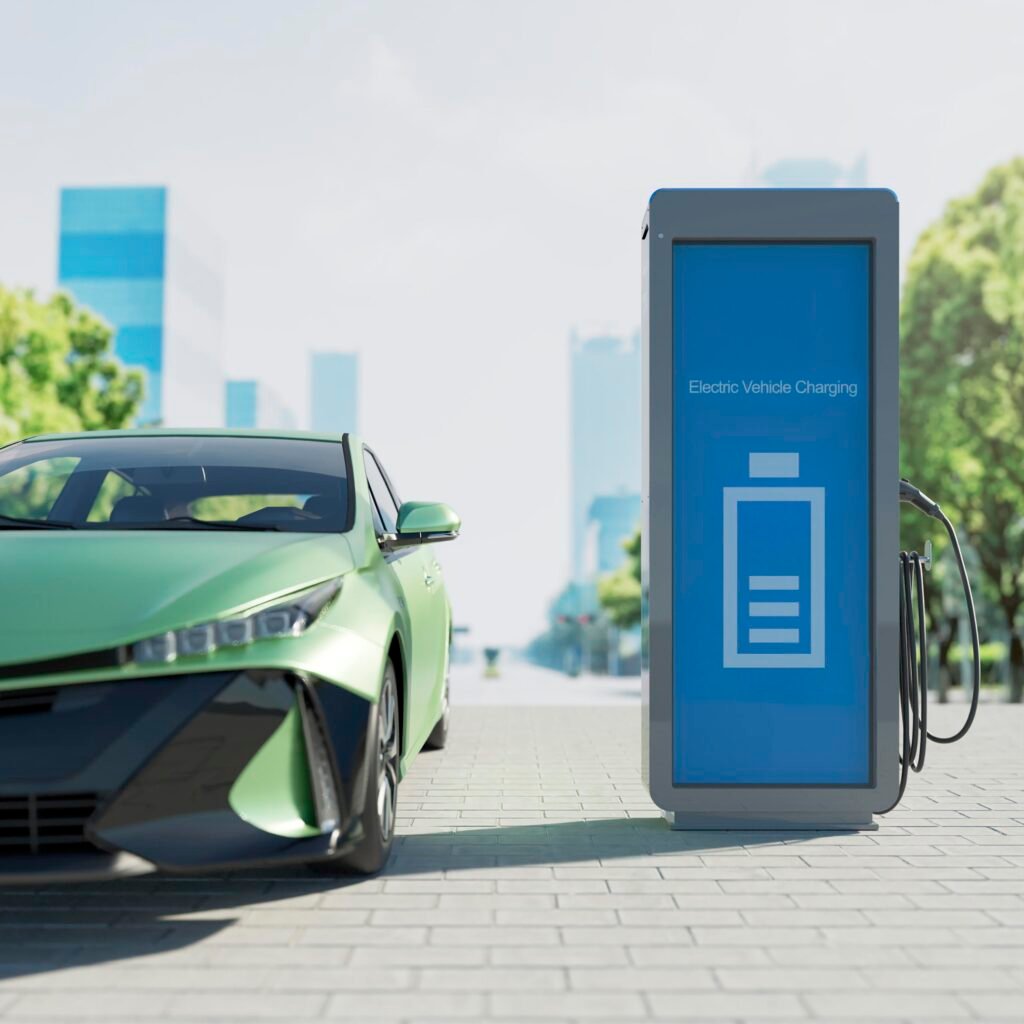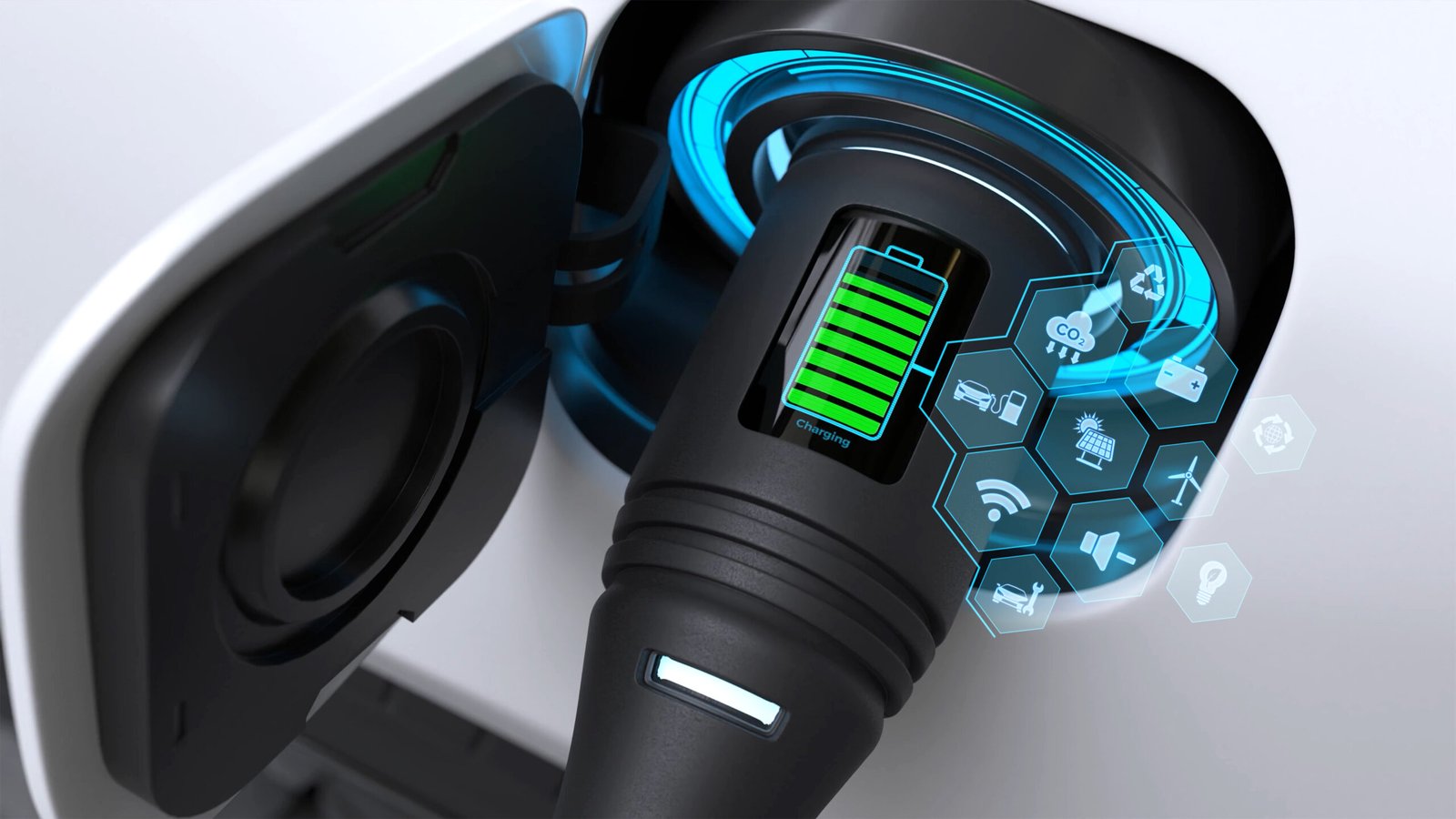The electric vehicle revolution is accelerating, but the technology powering these vehicles continues to evolve. Among the most promising advancements in EV technology are solid-state EV batteries, which many industry experts believe will address the limitations of current lithium-ion batteries and revolutionize electric transportation. This comprehensive guide explores solid-state battery technology, its benefits for electric vehicles, current development status, and what this means for the future of EVs.
What Are Solid-State Batteries?
Solid-state batteries represent the next generation of energy storage technology for electric vehicles. Unlike conventional lithium-ion batteries that use liquid or gel electrolytes, solid-state batteries employ solid electrolytes to transfer ions between the cathode and anode.
This fundamental design difference creates significant advantages in performance, safety, and longevity that could transform electric vehicles from a promising alternative to the dominant transportation technology.
Key Components of Solid-State Batteries
- Solid electrolyte: Typically made from ceramic materials, polymers, or solid glass
- Lithium metal anode: Replaces the graphite anodes found in traditional lithium-ion batteries
- Cathode: Often similar to those in current lithium-ion batteries
- Current collectors: Metal foils that transport electrons to external circuits
Advantages of Solid-State Batteries for EVs
Solid-state battery technology offers several compelling advantages over conventional lithium-ion batteries that could address current EV limitations:
1. Higher Energy Density
Solid-state batteries can achieve energy densities 2-3 times greater than current lithium-ion batteries. This translates to:
- Extended range: Potentially 500+ miles on a single charge
- Smaller battery packages: More interior space and reduced vehicle weight
- Improved efficiency: Less energy required to move the vehicle
2. Enhanced Safety
The solid electrolyte significantly improves battery safety by eliminating several risks associated with liquid electrolytes:
- Fire resistance: Solid electrolytes are non-flammable, virtually eliminating thermal runaway risks
- No leakage: Solid components cannot leak if the battery is damaged
- Greater structural integrity: More resistant to physical damage and punctures
3. Faster Charging
Solid-state battery chemistry enables much faster charging capabilities:
- Potential 10-15 minute full charging: Comparable to refueling a conventional vehicle
- Reduced infrastructure demands: Less strain on charging networks
- Minimized battery degradation: Less heat generated during fast charging
4. Longer Lifespan
The stability of solid electrolytes contributes to extended battery longevity:
- More charge cycles: Up to 5,000+ complete charge cycles compared to 1,000-2,000 for lithium-ion
- Reduced degradation: Better performance retention over time
- Lower total cost of ownership: Despite higher initial costs
5. Temperature Tolerance
Solid-state batteries demonstrate superior performance across wider temperature ranges:
- Enhanced cold-weather operation: Better performance in winter conditions
- Improved hot-weather stability: Less cooling required in summer driving
- Simplified thermal management: Reduced complexity in battery systems

Current State of Development
Despite their tremendous potential, solid-state batteries still face several challenges before widespread commercial implementation:
Manufacturing Scale
Most solid-state batteries remain in laboratory or small-scale production phases. Key manufacturing challenges include:
- Production processes: Developing economical high-volume manufacturing techniques
- Quality control: Ensuring consistency across thousands of cells
- Equipment adaptation: Retooling existing battery factories for new processes
Cost Factors
Current solid-state battery prototypes remain significantly more expensive than lithium-ion equivalents:
- Materials costs: Some designs require expensive materials
- Manufacturing complexity: More intricate production processes
- Scale economies: Not yet benefiting from mass production
Technical Hurdles
Engineers continue to address several technical challenges:
- Interface stability: Managing the solid-solid interface between electrolyte and electrodes
- Mechanical stress: Handling expansion during charge/discharge cycles
- Conductivity optimization: Achieving sufficient ion conductivity at room temperature
Major Players in Solid-State Battery Development
Several automotive manufacturers and technology companies have made significant investments in solid-state battery technology:
Toyota
Toyota has emerged as a leader in solid-state battery research with:
- Over 1,000 patents related to solid-state technology
- Planned commercial release in select vehicles by 2026
- Strategic partnerships with material suppliers
QuantumScape
This Silicon Valley startup backed by Volkswagen Group has:
- Demonstrated promising test results with single-layer cells
- Secured over $1.5 billion in funding
- Published peer-reviewed performance data exceeding industry targets
Solid Power
Backed by Ford and BMW, Solid Power has:
- Built a pilot production facility for solid-state cells
- Delivered sample cells to automotive partners
- Focused on sulfide-based solid electrolytes
Samsung
The Korean technology giant has:
- Developed a silver-carbon composite anode technology
- Claimed energy density improvements of 50%
- Integrated solid-state research into its battery division
Timeline for Commercial Implementation
Industry analysts predict a staged introduction of solid-state battery technology:
2025-2027: Initial Commercial Applications
- Limited production of high-end vehicles
- Hybrid solid-state designs (partial solid electrolytes)
- Premium pricing with emphasis on performance
2028-2030: Expanding Availability
- Increased production capacity
- Introduction in mid-range vehicle segments
- Cost reduction through manufacturing improvements
2030-2035: Mass Market Adoption
- Standard option in most electric vehicles
- Price parity with advanced lithium-ion batteries
- Retrofit options for earlier EV models
Impact on the EV Market
The successful commercialization of solid-state batteries could dramatically accelerate EV adoption by addressing key consumer concerns:

Range Anxiety Elimination
With potential ranges exceeding 500 miles, solid-state batteries would surpass typical internal combustion vehicles, effectively eliminating range anxiety.
Charging Infrastructure Requirements
Fast-charging capabilities would reduce the need for extensive public charging networks, making EV ownership more practical for those without home charging options.
Total Cost of Ownership
Despite higher initial costs, the extended lifespan of solid-state batteries would significantly reduce lifetime vehicle costs through:
- Reduced battery replacement needs
- Lower charging costs due to efficiency gains
- Increased vehicle resale values
Safety Perception
The enhanced safety profile of solid-state batteries could improve consumer confidence in electric vehicles, particularly among demographics concerned about battery fires.
Challenges and Limitations
Despite their promise, several challenges must be addressed before solid-state batteries become mainstream:
Manufacturing Scaling
Current laboratory-scale production methods must be adapted for mass manufacturing without compromising quality or performance.
Raw Material Requirements
Some solid-state designs require scarce materials that could create supply chain constraints similar to those affecting current battery production.
Integration Engineering
Vehicle systems designed around liquid-cooled battery packs will need significant redesign to optimize for solid-state characteristics.
Regulatory Certification
New battery chemistries will require extensive testing and certification for safety standards worldwide, potentially delaying commercial implementation.
Conclusion
Solid-state batteries represent the most promising advancement in electric vehicle technology on the horizon. While challenges remain before mass commercialization, the potential benefits in range, charging speed, safety, and longevity could eliminate most remaining barriers to widespread EV adoption.
As automotive manufacturers and technology companies continue investing billions in research and development, solid-state battery technology moves closer to commercial reality. For consumers considering electric vehicles, understanding this emerging technology provides important context for purchase decisions, particularly for those planning to own vehicles long-term.
The transition from liquid to solid electrolytes may seem like a small change, but it represents a fundamental shift in energy storage that could finally make electric vehicles the uncontested superior choice for personal transportation—combining uncompromised convenience with environmental benefits and economic advantages.




